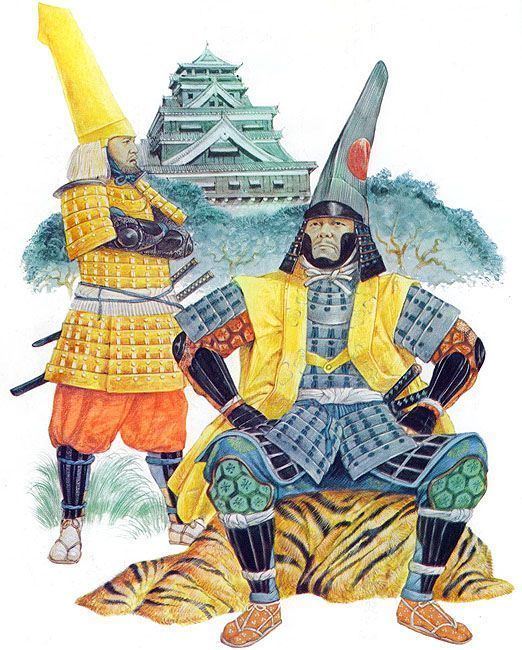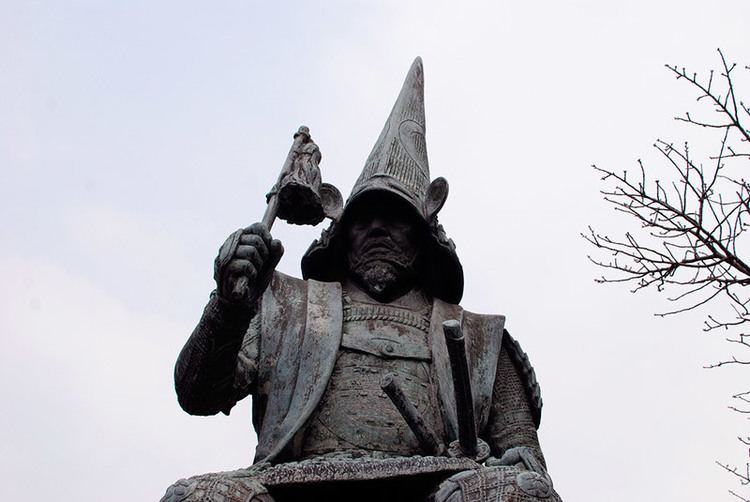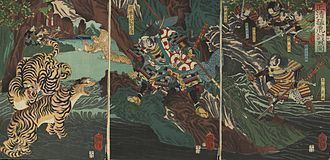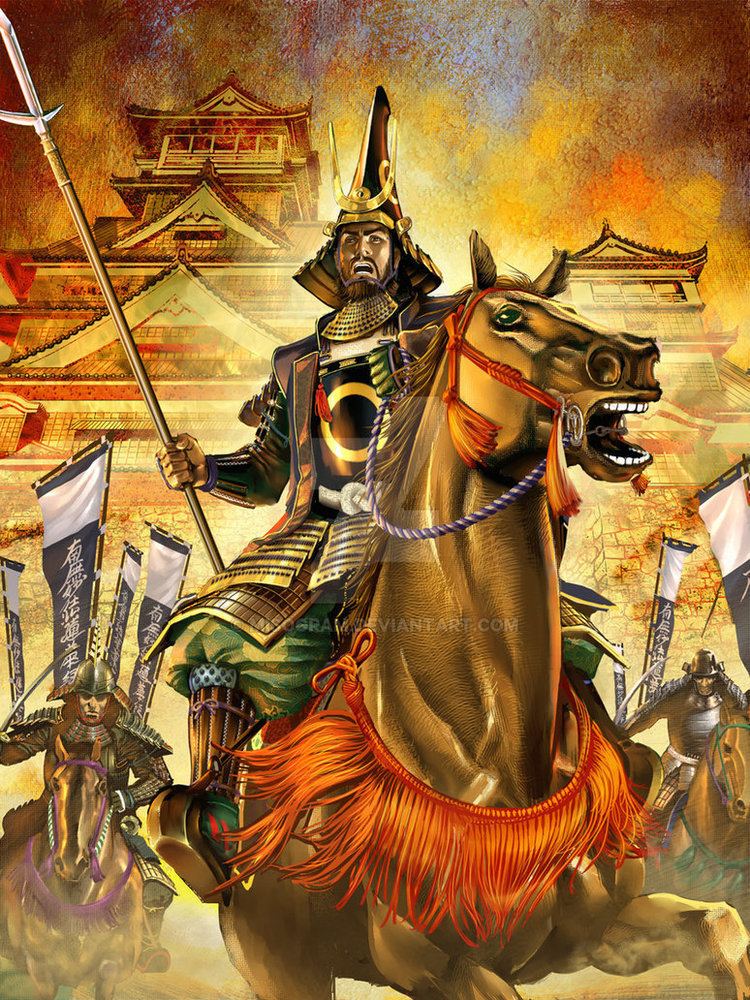Preceded by Sassa Narimasa Nationality Japanese | Succeeded by Kato Tadahiro Name Kato Kiyomasa | |
 | ||
Born July 25, 1561Owari Province, Japan ( 1561-07-25 ) Died August 2, 1611(1611-08-02) (aged 50)Kumamoto, Japan | ||
Samurai warriors 4 kato kiyomasa s rare weapon
Katō Kiyomasa (加藤 清正, July 25, 1561 – August 2, 1611) was a Japanese daimyō of the Azuchi–Momoyama and Edo periods. His court title was Higo-no-kami. His child name was Yashamaru, and first name was Toranosuke.
Contents
- Samurai warriors 4 kato kiyomasa s rare weapon
- Kato Kiyomasa Tomokazu Sugita Gozan Omouhite
- Origins and early career
- During the Seven Year War
- Later life
- In popular culture
- References

Kato Kiyomasa (Tomokazu Sugita) - Gozan Omouhite
Origins and early career

Kiyomasa was born in what is now Nakamura-ku, Nagoya (situated in contemporary Aichi District, Owari Province) to Katō Kiyotada. Kiyotada's wife, Ito, was a cousin of Toyotomi Hideyoshi's mother. Kiyotada died while his son (then known as Toranosuke) was still young. Soon after, Toranosuke entered into the service of Hideyoshi, and in 1576, at age 15, was granted a stipend of 170 koku. He fought in Hideyoshi's army at the Battle of Yamazaki, and later, at the Battle of Shizugatake. Owing to his achievement in that battle, he became known as one of the Seven Spears of Shizugatake. Hideyoshi rewarded Kiyomasa with a reward of 3,000 koku.

When Hideyoshi became the kampaku in the summer of 1585, Kiyomasa received the court title of Kazue no Kami (主計頭, head of the accounting bureau) and junior 5th court rank, lower grade (ju go-i no ge 従五位下). In 1586, after Higo Province was confiscated from Sassa Narimasa, he was granted 250,000 koku of land in Higo (roughly half of the province), and given Kumamoto Castle as his provincial residence.
During the Seven-Year War

Kiyomasa was one of the three senior commanders during the Seven-Year (Imjin) War (1592–1598) against the Korea. Together with Konishi Yukinaga, he captured Seoul, Busan and many other cities. He defeated the last of the Korean regulars at the Battle of Imjin River and pacified Hamgyong.

The Korean king Seonjo abandoned Seoul before Kiyomasa's forces. Kiyomasa held two Korean princes who had deserted as hostages and used them to force lower-ranking Korean officials to surrender. During the war, he apparently hunted tigers for sport, using a spear, and later presented the pelts to Hideyoshi. Some versions of the story says he was in fact hunting tiger to catch them alive, in order to bring their meat to Hideyoshi, as he thought it would improve his lord's health, but later, the tiger was killed because of the lack of food.

Kiyomasa was a renown castle-builder. During the Imjin war he built several strategic Japanese-style castles. Ulsan castle was one of such fortresses and the site of Kiyomasa's most famous battle — the Siege of Ulsan on December 22, 1597. Kiyomasa led the defense of the castle, successfully holding at bay Chinese general Yang Hao's (楊鎬) army, which numbered 60,000. He defended Ulsan until November 23, 1598. However, his bravery was not reported to Hideyoshi by his rival and superior Ishida Mitsunari. Hideyoshi recalled him to Kyoto. After Hideyoshi's death, he clashed with Mitsunari, and approached Tokugawa Ieyasu.
William Scott Wilson describes Katō Kiyomasa thus: "He was a military man first and last, outlawing even the recitation of poetry, putting the martial arts above all else. His precepts show the single-mindedness and Spartan attitudes of the man, [they] demonstrate emphatically that the warrior's first duty in the early 17th century was simply to 'grasp the sword and die'. Contemporary accounts of Katō describe him as awe-inspiring, yet not unfriendly, and a natural leader of men."
Later life
Kiyomasa was a daimyō of Kumamoto on the island of Kyushu. He built Kumamoto Castle, one of the three most famous castles in Japan. As a number of other daimyo who participated in the invasion of Korea, he settled a group of captive Korean potters.
A devoted member of Nichiren Buddhism, Kiyomasa encouraged the building of Nichiren temples. He came into conflict with Konishi, who ruled the neighboring domain in Higo, and was a Christian. Kiyomasa was noted for brutally suppressing Christianity. At the battle of Hondo, he ordered his men to cut open the bellies of all pregnant Christian women and cut off their infant's heads.
During the Battle of Sekigahara, Kiyomasa remained in Kyūshū. Believing that the Toyotomi would fall without the help of the Tokugawa (and the hatred he had of Ishida Mitsunari commanding the Toyotomi forces), he sided with the eastern army of Tokugawa Ieyasu. For his loyalty to the Tokugawa, Kiyomasa was rewarded with the former territories of his rival Konishi (who had sided with Ishida), which when added to his existing territory, increased the Kumamoto domain to around 530,000 koku.
In his later years, Kiyomasa tried to work as a mediator for the increasingly complicated relationship between Tokugawa Ieyasu and Toyotomi Hideyori. In 1611, en route by sea to Kumamoto after one such meeting, he fell ill, and died shortly after his arrival. He was buried at Honmyō-ji temple in Kumamoto, but also has graves in Yamagata Prefecture and Tokyo. Kiyomasa is also enshrined in many Shinto shrines in Japan, including Katō Shrine in Kumamoto.
In 1910, Kiyomasa was posthumously promoted to junior 3rd court rank (jusanmi 従三位).
In popular culture
Katō Kiyomasa is a character in the Koei video games Kessen, Kessen III, Samurai Warriors 3, Samurai Warriors 4, Mōri Motonari: Chikai no Sanshi and Age of Empires III. He is a playable character in Pokémon Conquest (Pokémon + Nobunaga's Ambition in Japan), with his partner Pokémon being Fraxure and Haxorus.
